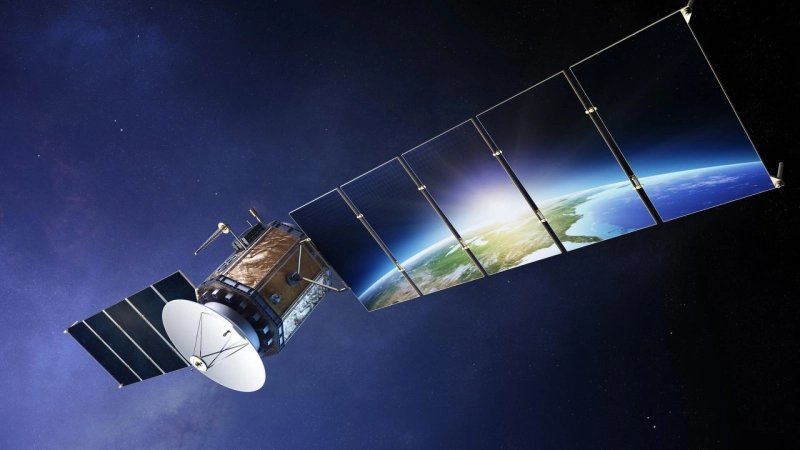The global satellite communication (SATCOM) market is set to gain impetus from the high demand for small satellites in a wide range of sectors, such as oil & gas, energy, agriculture, and civil engineering for the purpose of earth observation. In April 2021, for instance, China Great Wall Industry Corp. delivered nine small satellites through the Long March 6 rocket in space for verifying technologies for inter-satellite laser communications and autonomous mission planning, as well as getting weather remote sensing images. This information is given by Fortune Business Insights™ in a published report, titled, “Satellite Communication (SATCOM) Market, 2021-2028.” As per the report, the SATCOM market size was USD 23.44 billion in 2020. It is projected to grow from USD 25.33 billion in 2021 to USD 46.50 billion in 2028 at a CAGR of 9.07% in the forecast period.
A list of renowned satellite communication providers operating in the global market:
Boeing (The U.S.)Cobham Limited (The U.K)General Dynamics Corporation (The U.S.)Honeywell International Inc. (The U.S.)Indra (Spain)Inmarsat Global Limited (The U.K)Iridium Communications Inc. (The U.S.)L3Harris Technologies, Inc. (The U.S.)Qualcomm Technologies, Inc. (The U.S.)Viasat, Inc. (The U.S.)Segments-
Land Equipment Segment Held 42.86% Share in 2020: Fortune Business Insights™
By platform, the market is fragmented into portable, land, maritime, and airborne. Out of these, the land equipment procured 42.86% in 2020 in terms of the SATCOM market share. This growth is attributable to the surging usage of armored vehicles for military and commercial applications worldwide.
Report Coverage-
The research report offers a comprehensive analysis of pre-existing companies that can affect the outlook throughout the forthcoming years. Besides, it provides an accurate assessment by highlighting information on several aspects that may include growth drivers, opportunities, trends, and hindrances. It also represents the market size from a global perspective by analyzing qualitative insights and historical data.
Drivers & Restraints-
Increasing Usage of IoT-enabled Devices in Satellites to Bolster Growth
The aviation industry is nowadays adopting IoT-enabled systems and devices for exchanging real-time data with the processing units. This is helping companies to optimize their operations. At the same time, IoT-enabled devices utilize satellite connectivity for exchanging and transmitting real-time data between components and IoT systems. It helps in lowering the overall time of the process. In the olden days, the exchange of data between the production and machine control systems was conducted through terrestrial GSM networks. Today, these networks are rapidly being replaced by satellite connectivity. These factors are anticipated to propel the SATCOM market growth in the upcoming years. However, satellite communication can often fall prey to various cyber-security issues, which, in turn, may hamper growth.
Regional Insights-
Presence of L3Harris and General Dynamics to Help North America Remain at Forefront
Geographically, North America stood at USD 9.03 billion in 2020 in terms of revenue and dominated. The presence of renowned satellite communication providers, such as Honeywell International, Inc., General Dynamics Corporation, and L3Harris Technologies Corporation would drive regional growth. On the other hand, Asia Pacific is anticipated to grow remarkably backed by the extensive usage of satellite antennas in a wide range of industries, such as aviation, IT, and telecommunication.
COVID-19 Pandemic: Production Halt and Postponement of Satellite Launches to Hinder Growth
The COVID-19 pandemic has severely affected the space industry across the globe. Most of the companies present in the SATCOM industry are facing numerous challenges because of the halt of production and postponement of contracts and new satellite launches. NASA, for instance, stopped its work on the James Webb Telescope project, the development of a deep-space exploration spacecraft, and the Artemis program. We are providing elaborate research reports to help you find a unique solution for overcoming this grave situation.
Competitive Landscape-
Key Players Focus on Winning New Agreements & Orders to Compete in Market
The market contains several prominent companies that are mainly aiming to gain a competitive edge through bagging new orders and signing agreements with government agencies. Some of the others are also participating in the partnership strategy to generate more sales. Below are the two significant industry developments:
November 2020: The European Space Agency (ESA) awarded a three-year contract worth USD 26 million to It would enable the latter to develop a new SATCOM services platform for helping governments to procure, plan, monitor, and manage these services. The platform will be named International Virtual Satellite Operators Network (INVISION).May 2020: The European Defense Agency (EDA) provided a contract worth tens of millions of euros to Airbus. It will allow EU members to gain access to satellite services and solutions through EDA. The company will provide satellite communication through L, Ka, Ku, and C-bands.Information Source-
https://www.fortunebusinessinsights.com/satellite-communication-satcom-market-102679
0


